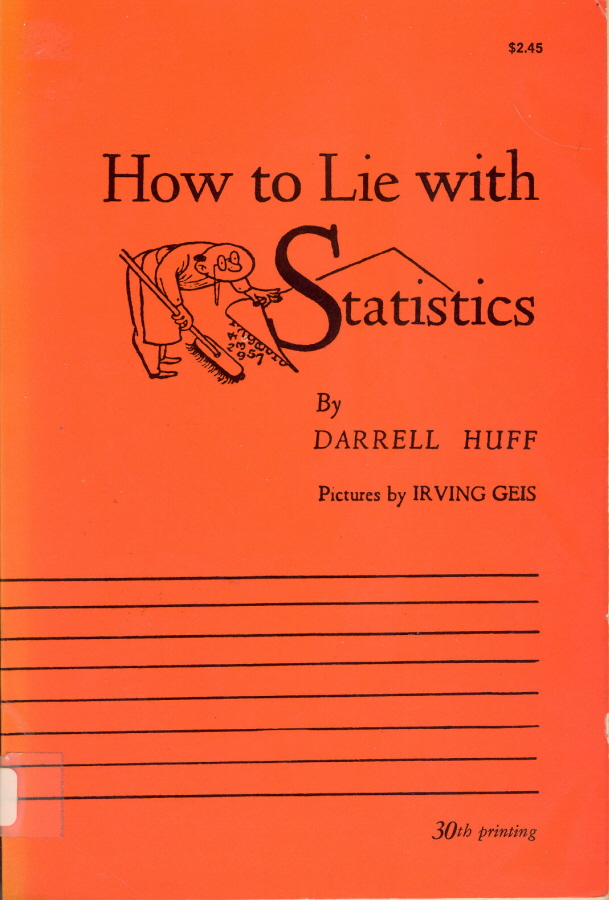

He discusses some overdone gimmicks such as the ‘ small base‘ effect, used to highlight disproportionate gains except that gains are anything but disproportionate.Īt the same time, there are certain ruses that continue to escape public scrutiny. In the later chapters of How to lie with Statistics, Huff sheds light on the dubious world of percentages and fractions.

Huff aptly quips later in the book, “ There are often many ways of expressing any figure…The method is to choose the one that sounds best for the purpose at hand and trust that few who read it will recognize how imperfectly it reflects the situation.“ Whereas your objective is to put an optimistic picture to your audience. Now, this graph with dips in July-Sept and Jan-Mar quarters paints a rather grim picture (Graph 1).

Your boss instructed you to include quarterly trends of the last one year. Let’s say you have to make a presentation to a bunch of media newbies. In a chapter titled ‘The Gee-Whiz Graph’, he illustrates how, sometimes, graphs are twisted and molded so as to impart an entirely opposite meaning without falsifying anything. The deliberate use of small samples to exaggerate outcomes, intentional deployment of pictorial graphs that bear no resemblance to the real situation are some of the other con-techniques that Huff discusses in the book.

Huff mentions several other tricks that advertisers and propagandists often use to flummox consumers and sway trends. There are also times when such pitfalls inadvertently sneak into the picture doing even more damage. The vested interests intentionally deploy these traps. Remember, one extraordinarily high figure can pull up the mean average salary by a long shot whereas a median figure depicts a much better picture as to how the B-school has actually fared in placing its students. If a business school publicizes its mean average salary without ever mentioning the ‘median’ salary, then it’s likely to be hiding something. Determining a truly random sample is a strenuous task yet everyone claims to find their fit. A sample is biased when it doesn’t adequately represent the population from which it is drawn. One of the basic traps in statistics, according to Huff is the built-in sample bias. And, with so much data floating around, the statistical chicanery has gone up several notches, too. The flurry of data-laden information coming our way has shot up manifold since ’50s. Its relevance for anyone who wants an initial peek into the world of statistics can’t be overstated. Illustrations also look below-par work of a mediocre graphics artist and even some of the well-intentioned advice sounds commonplace.ĭespite these deficiencies, the book seems to have stood the passage of time. In Huff’s own words, “The crooks already know these tricks honest men must learn them in self-defense.”Īlmost six decades on since the first print and due to lack of any revised editions, many examples in the book sound outdated.


 0 kommentar(er)
0 kommentar(er)
